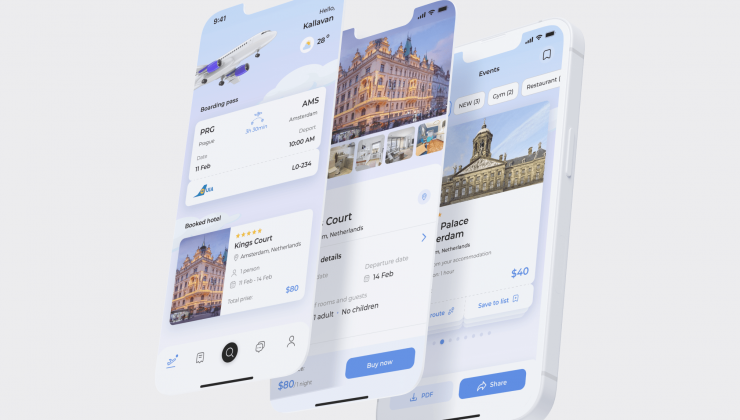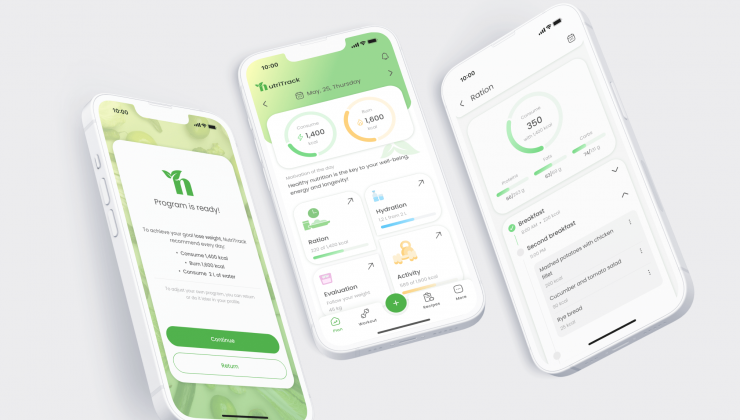Currently, the AI impact on software development cannot be overestimated: this technology successfully replaces the work of live specialists, doing it faster, more efficiently, and, importantly, cheaper. However, this seemingly ideal business model has its drawbacks.
Below, we with our parthner Azumo, a software development company will share our thoughts on the use of artificial intelligence in software development and in the software solutions themselves and also consider specific cases taken from our personal experience.
AI in Software Products: How It Can and Cannot Benefit
Let's start with the fact that AI is just gaining momentum, which means that its capabilities are still quite limited.
Also, AI built from scratch always requires preliminary training, which, in turn, requires relevant training resources and, of course, time.
Also, AI can still make mistakes and is generally not universal – you can hardly resort to its help in the absence of an Internet connection or if your request involves the use of the latest data (for example, Chat GPT so far uses information collected only from the web up to 2022 inclusive).
Finally, it is important to understand that AI does not have emotions, empathy, compassion, or critical thinking, which is inherent in ordinary people. This means that you shouldn’t expect an AI-driven solution, no matter how advanced it is, to be able to feel the emotional coloring of a specific task and offer a solution that is relevant to it.
This context imposes a lot of restrictions on the use of AI:
- you will need to understand what value you can provide to the user or get for your business through AI;
- you will have to assess your ability to involve your project team in the process of analyzing the prospects that AI implementation can open up for you (as well as the limitations associated with it) – ultimately, it may turn out that there are more accessible and easier-to-implement technologies that can cover your business needs;
- if you are going to publish your software solution in mobile app stores, you will need to make sure that it meets their privacy requirements for user data and, in general, that it respects the ethical side of using artificial intelligence (especially if you plan to provide recommendations and advice, and not just generate creative content).
Transparency and End-User Value as The Key to Success of AI-Driven Solutions
It should be noted that many people are still wary of artificial intelligence as a technology in general. That is why if you decide to create a software solution with it at its heart, you will need to remain as transparent as possible about your intentions in every feature and detail and explain to users everywhere what data your AI will use, for what purposes, and what they will receive in return.
In this regard, you will need to answer the following questions:
- What kind of user data does your system use?
- Does the content created by other users affect the operation of your system – for example, does the system rely on data provided by other users?
- How do you use user data to improve the operation of your system?
- How do you guarantee or not guarantee the accuracy and reliability of the results generated by the system?
In general, you have to keep your solution simple and technical, but, at the same time, respect the privacy of users and only collect personal data with their explicit and unconditional consent. Also, give users the option to use your solution without providing personal data, if technically possible (or warn them that you cannot provide high-quality recommendations). Finally, you will need to ensure that your target audience has clear control over their data and the ability to manage its collection and use.
Another cornerstone is implementing a plan for collaborative learning and adaptation. As AI (and the people working to improve it) continually evolve, you will need to keep it in your mind when updating the models your software solution is based on. So, to avoid giving users room for imaginary speculation about how exactly it works, every time you update your solution, you will need to additionally notify your users about it.
In particular, the following points from the Microsoft HAX Toolkit recommendations can be used as a basis:
- Learn from user behavior and encourage their honest feedback;
- Update and adapt carefully, notifying users of changes;
- Consider how valuable what you are creating will be to your audience;
- Evaluate the moral consequences of your solution;
- Create long-term strategies, not just temporary solutions;
- Strive to consider not only your business goals but also the problems and goals of your audience.
Now, let's move from theory to practice.
Best Practices for Using AI in Software Solutions
Let's look at specific cases of successful implementation of AI in software solutions implemented by our team.
The Voyage App
Let's start with the Voyage App (real name is protected by NDA) application for optimization of tourist routes. We were approached by a client who wanted to create not just another booking application but something more. Specifically, it had to become a full-fledged smart assistant that would not only help with booking airline tickets and hotel rooms but also with the selection of leisure activities in a new place, taking into account the individual preferences of the user.

Since personalization is one of the strongest features of AI, we made a joint decision to implement it in this project – precisely for the purpose of generating individual tourist routes. We built the intended functionality with the end user's convenience in mind – first, they had to complete a simple questionnaire that would provide the AI model with all the necessary information, and then they could generate recommendations for visiting attractions in one click, both online and offline (as a PDF file).
A few months after the first contact with the client, we uploaded the finished solution to Google Play and the App Store, where it received user ratings of 5.0 and 4.9 points, respectively.
What conclusions can we draw from the experience? First of all, it is worth noting that we did not have a direct task to use AI. Therefore, we only gradually came to the conclusion that this technology could solve the end user's problem in a unique way.
We also analyzed the risks: What consequences can end users face if the AI model generates an incorrect answer?
For example, what happens if some of the attractions are closed at the time of the visit or if the photo selected by the AI is not informative enough (and the user misses a really worthy place to visit)?
Or, for example, what will be the consequences if this model does not find any information on the Internet about places that deserve attention according to their preferences? Agree, nothing catastrophic will happen. So, these conclusions gave us the “green light” to use this technology in the project, demonstrating its potential success after launch (which was subsequently confirmed in practice).
The NutriTrack App
Now, let's talk a little about another outstanding case that was brought to life by our team – this is the NutriTrack mobile application (its real name is protected by NDA), designed to provide users with an individual approach to dieting and getting rid of bad habits.

While existing analogs had limited personalization capabilities, the client decided to go beyond the standard approach to nutrition planning and try to solve this problem with the help of AI. After a comprehensive analysis of the client's requirements, we decided to use such APIs as Edamam Nutrition Analysis and Nutritionix (to calculate the calories, proteins, fats, and carbohydrates consumed by the user), as well as AI-driven APIs Spoonacular and Tasty (to generate individual diet plans taking into account the goals set by this user).
As a result, we created a high-tech AI assistant for healthy eating, which received breathtaking success on the App Store – it was reflected in 50,000+ downloads in just a month and a half. As for the Android version, it is currently being prepared for launch, and this will gradually lead this app to an even greater expansion of its target audience.
Working on this project helped us come to the conclusion that in all decisions concerning the health of users, AI should act carefully, notifying them of possible consequences. Indeed, despite its awareness of “everything in the world”, this technology is still not a certified doctor who is fully aware of the risks of making an incorrect diagnosis. Therefore, the recommendations generated by such applications should be general enough so as not to cause serious health problems for those who decide to follow them.
AI in SDLC: This Is Still Not a Unitary Solution
After a fairly informative text about how AI helps businesses solve their problems and the problems of their audiences in non-trivial ways, we would like to briefly talk about AI in software development and, specifically, how this technology helps us in our work processes.
In particular, like many other development companies, we actively use AI at the requirements analysis stage – given the colossal data volumes that AI operates with, it would be a big omission for us not to benefit from its advanced capabilities. Also, AI tools have proven to be useful for our team in testing – thanks to their colossal potential for detecting vulnerabilities in the software, they allow us to significantly reduce the resources spent on this SDLC stage and, thus, speed up the time to market while increasing the quality of the final solution.
Our recent discovery was the possibility of using AI tools in design – currently, our specialists have received the appropriate certification. Now, with their help, they can create ethical solutions that meet modern standards of usability and privacy of user data more quickly and efficiently.
In the near future, we are going to expand our views on the possibilities of using AI in software development, but we will do this only thoughtfully and only with the benefit of our clients (i.e. their budget, business goals, the needs of their audiences, etc.).
Final Thoughts
To sum up, both project teams and AI solutions’ owners must be fully aware of why they are going to use AI and what consequences it may entail – only then the success of these solutions will be predictable and logical. If you would like to delegate your project to a team that has experience in developing AI-powered projects and uses all the technologies available to them rationally, feel free to contact us.


